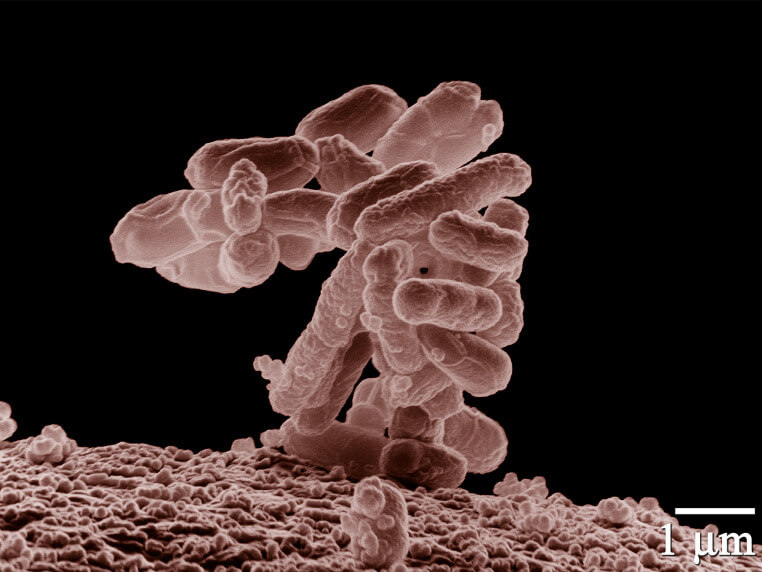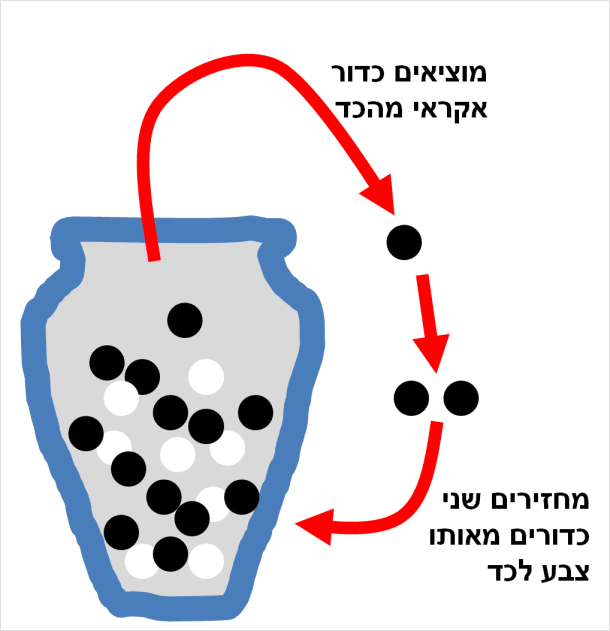I met with Yuval Elhanati to ask him what they are doing there at the university.

Yuval graduated with a bachelor's degree in physics and mathematics as an assistant, and a master's degree in physics while serving in the military, both at Tel Aviv University. These days he finished his doctoral thesis as a student at the Center for Biological Network Research at the Technion, under the guidance of Prof. Naama Brenner and in collaboration with Prof. Erez Brown. The subject of his research was the study of populations of microorganisms.
At the end of his first degree, Yuval looked for a research topic that would include interesting mathematics but would also focus on its uses. After a little bragging in the area of string theory and recalculating a route, he became interested in the field of complex systems and mathematical approaches to biological systems.
Yuval, so what are you doing there?
We are working on developing theoretical models to describe populations of microorganisms. An example of microorganisms is yeast or bacteria, but our models are general and can be generalized to any microorganism.
What do microorganisms do in everyday life?
First, they can divide, so population size is dynamic. Also, considerations of heredity and closeness between individuals must be taken into account. In addition, the microorganisms can eat things from the environment, excrete substances into the environment, move, decide to stop dividing or alternatively increase the rate of division and more.
The details can affect the environment and therefore the population and vice versa. For example, if one individual eats the food around it faster and the amount of food is limited, then the rest of the population will have less food. That is, between the individuals in the population there is a very complex interaction.
So what about these populations interests you?
For example, the size and composition of the population after a certain time. Did she thrive? Is she extinct? What are the formations and subgroups created? In general, the field is called population dynamics, and it is not exclusive to microorganisms, but can also be used, for example, for the study of disease outbreaks or ecology.
It should be emphasized that we do not study the individuals themselves, i.e. we are not microbiologists. We take information about the behavior of the individual microorganism from existing studies, decide what of it is relevant to our research, and then test the behavior of a population of individuals of this type.
Tell me about one of your studies.

happily. Today there are techniques to grow microorganisms under very restrictive conditions, for example growing them in a very small drop of liquid. The population in a drop will always remain very small - a 'micro-population' - and therefore the variation between individuals, which is usually not significant in normal populations, will be more pronounced. We decided to investigate the development of this type of population.
It must be remembered that even if all individuals are genetically identical, they will not be truly identical, similar to the case of identical twins. Each individual has its own eating rate, its own distribution rate, a unique amount of food required for distribution and other characteristics. These are epigenetic traits, i.e. traits that are inherited beyond genes, and depend, among other things, on environmental conditions. For the purpose of building the model, we define the internal variability of the population, for example by defining subgroups that each have a different distribution rate. This is an approximation, but a reasonable approximation. During the study we assumed that there is an initial variation in the metabolic properties of the individuals in the population such as the rate of division and the amount of food needed for division.
And what did you find?
Because the drop is small, it has a limited amount of food and resources. When resources run out, the population stops dividing. We found that under certain conditions the size of the final population, after all the food in the environment is gone, depends on its initial size. This finding is surprising because in normal populations the final size of the population depends on the amount of resources and not on its initial size. This surprising behavior was also observed in the laboratory. In addition, we showed that the smaller the initial population, the greater the variation in the final size of the population.
Tell me about the nature of the work.
In the first step, I come across an interesting biological experiment and think about an explanation for the results. In the next step, I build a model of a microorganism that will contain all the relevant actions such as division, and all the relevant parameters such as the rate of division or the amount of food needed for division. The aim is for the model to contain a minimal number of parameters that still allows meaningful results to be produced. Now that the dynamics are defined, one can ask what the population will look like after the food has run out for a certain initial population.
And how did you answer these questions in your research?
There are several ways to approach the problem. The first is to run Monte Carlo simulations on a computer. With this method, a set of possible scenarios (such as distribution and eating) and probabilities are defined for each individual in the population. In each round the software analyzes for each detail what he is doing. The simulation is run until the food is finished. This method relatively easily produces the results for, for example, the final population size, but does not provide much insight into the process itself, and above all requires choosing specific parameters.
A second method is to write a set of rate equations that mathematically describe the dynamics. The equations can be solved with the help of a computer program, and the desired sizes can be obtained. The main disadvantage is that the solution is the average solution for certain initial conditions. That is, if we run the real experiment a large number of times, each time we will get a different population size, and the average size between all these experiments is well described by solving the rate equations. We were actually interested in the diversity of the solutions, so we were not satisfied with this method.
The third method is to build a stochastic model. Unlike the rate equations that give a deterministic solution, this model has a dimension of randomness and can produce not only the average solution, but also the distribution of the results. In retrospect, the main challenge in the project, and the one I found the most interesting, was to understand which stochastic model to solve and how to solve it.
So how did you actually solve the stochastic model?

What I was able to do is to map the problem to another known problem in probability called Polya urn which I discovered is analogous to my problem (see Figure 3). Imagine a jar with two types of balls: black and white. Now you take out a ball at random, check its color and put it back in the trap along with another ball of the same color. This operation simulates the division operation. This problem in probability has been studied extensively in the past, and I could use existing knowledge and analogy to find the desired distributions in my problem. The model also gave the ability to peek inside the process and understand the effect of each parameter.
A concluding sentence.
Our general goal in dealing with biology from such a theoretical perspective is mainly to find general principles for the way in which a population develops, and to develop appropriate mathematical tools to deal with the necessary models. I am hopeful that in the future researchers in the field of biology will find use in these models and techniques.
